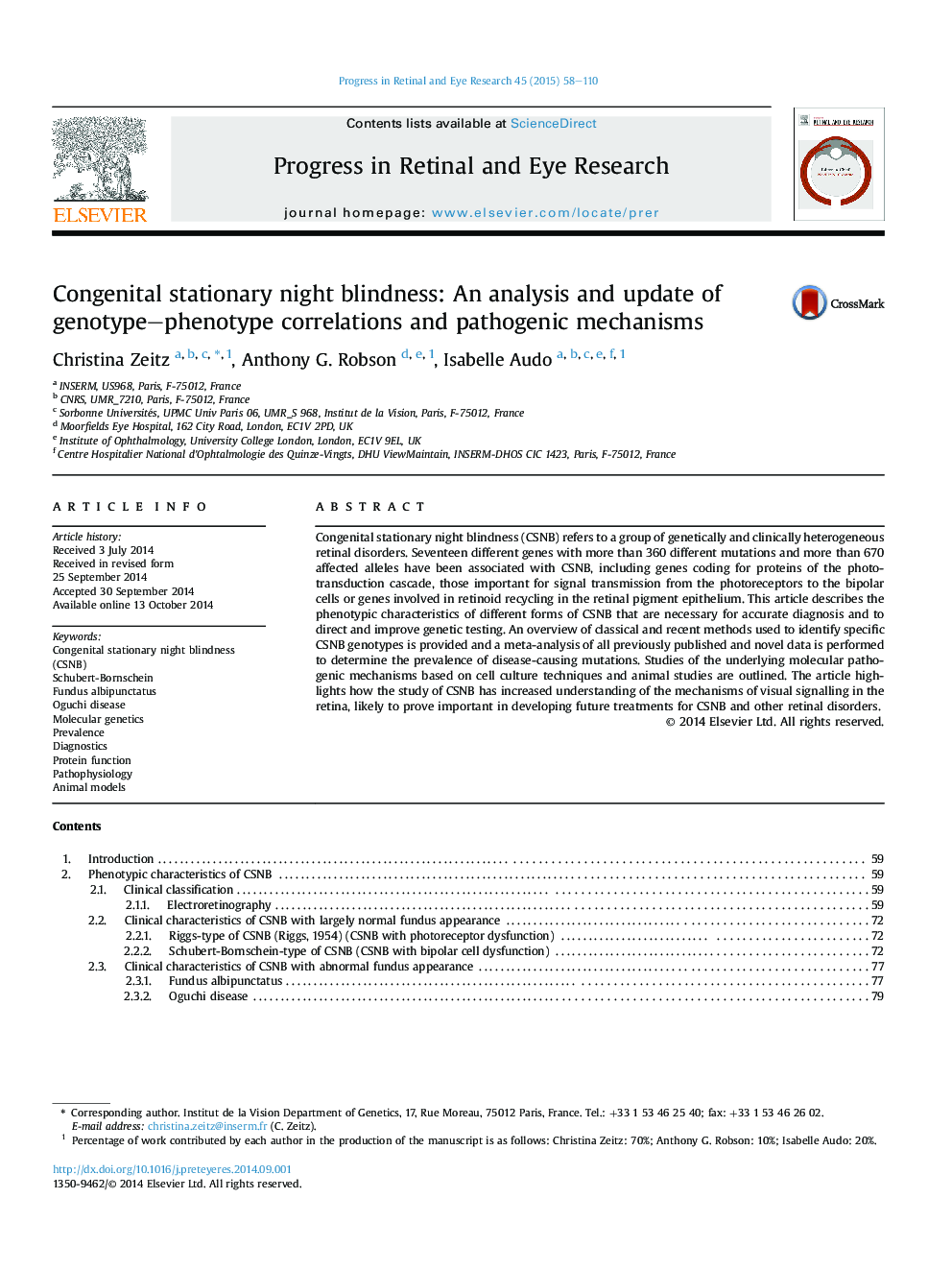| Article ID | Journal | Published Year | Pages | File Type |
|---|---|---|---|---|
| 4031923 | Progress in Retinal and Eye Research | 2015 | 53 Pages |
Congenital stationary night blindness (CSNB) refers to a group of genetically and clinically heterogeneous retinal disorders. Seventeen different genes with more than 360 different mutations and more than 670 affected alleles have been associated with CSNB, including genes coding for proteins of the phototransduction cascade, those important for signal transmission from the photoreceptors to the bipolar cells or genes involved in retinoid recycling in the retinal pigment epithelium. This article describes the phenotypic characteristics of different forms of CSNB that are necessary for accurate diagnosis and to direct and improve genetic testing. An overview of classical and recent methods used to identify specific CSNB genotypes is provided and a meta-analysis of all previously published and novel data is performed to determine the prevalence of disease-causing mutations. Studies of the underlying molecular pathogenic mechanisms based on cell culture techniques and animal studies are outlined. The article highlights how the study of CSNB has increased understanding of the mechanisms of visual signalling in the retina, likely to prove important in developing future treatments for CSNB and other retinal disorders.
